

Live From Mars was active July 1996-December 1997.
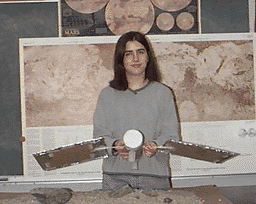 | 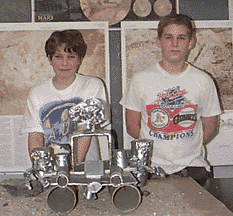 |
| Alison is holding the satellite... | ...as Rennie and Alison are pictured with the rover. |
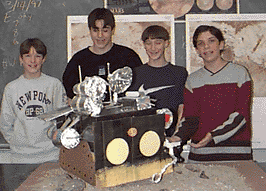
| 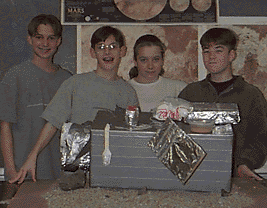 |
| Our names are Bob, Issac, Josh and Tyler. Our rover's mission task was to analyze the atmosphere of Mars. We had many tools to accomplish this. Among these were an air sampler, a Geiger counter, and a thermometer. The rover uses its tank tracks to drive up a mountain to find the contents at the atmosphere at different altitudes. | We are Dan, Josh, Monica and Dane. Our group built a rover that is supposed to take samples of water or permafrost. Our rover has a drill and a sampler to collect ice to be analyzed. These are just some of the instruments we used on our rover. |
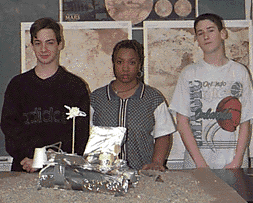
| 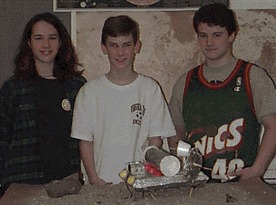 |
| Our names are Jon, Jessica, and John. Our mission was to see how much oxygen was in the rock, see if there was any fertile soil for seeds, and see if we could make concrete from the rock so people could someday build buildings on Mars. I think we did a good job building it. We had an x-ray diffractometer to see what elements are in the rock. We also included a module to plant and care for seeds in soil samples. We also have cameras and a transmitter. The rover should be able to operate on Mars for at least a year. | Our group consists of Laura, Jesse, Chris, and Maria (not shown). Our task was to find fossils on the surface of Mars. This model, the S.S. Minnow, is designed to move easily around the terrain, climb around or over rocks, and climb canyon walls. It uses a type of ground radar to find fossils. The heater keeps the rover operating. The rover stores energy in 3 batteries to use at night and during dust storms. |
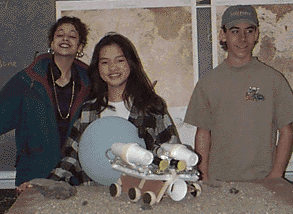
| 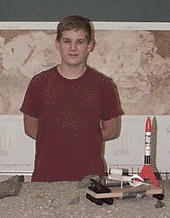 |
| Our mission was to explore craters to find one for a domed settlement. The rover must be able to get on and out of craters and take samples. The rovers must land near the crater field, so we can get information on a bunch of different craters. We used: cameras, lights, a laser, a heater, insulation, a parachute, a hot air balloon, an air sampler and analyzer, sonar and radar, and a satellite dish. | My name is Rennie. The TM-geo is a prototype of a machine scheduled to land on Mars. Its mission is to land in a mountain range and take photos of the area, so that we can designate landing spots for future missions. It accomplishes this by using a rocket, which can be repeatedly launched from the rover. The rover will reach a height of about 50 kilometers before using a parachute to drift down to the surface, taking pictures. |

![]()